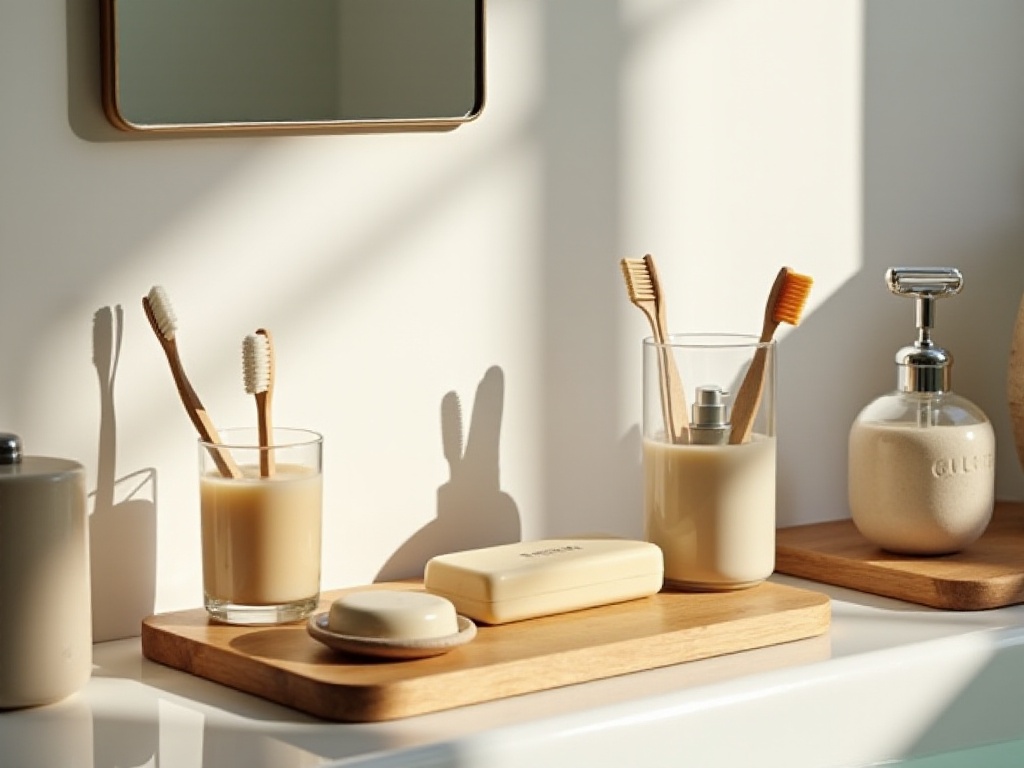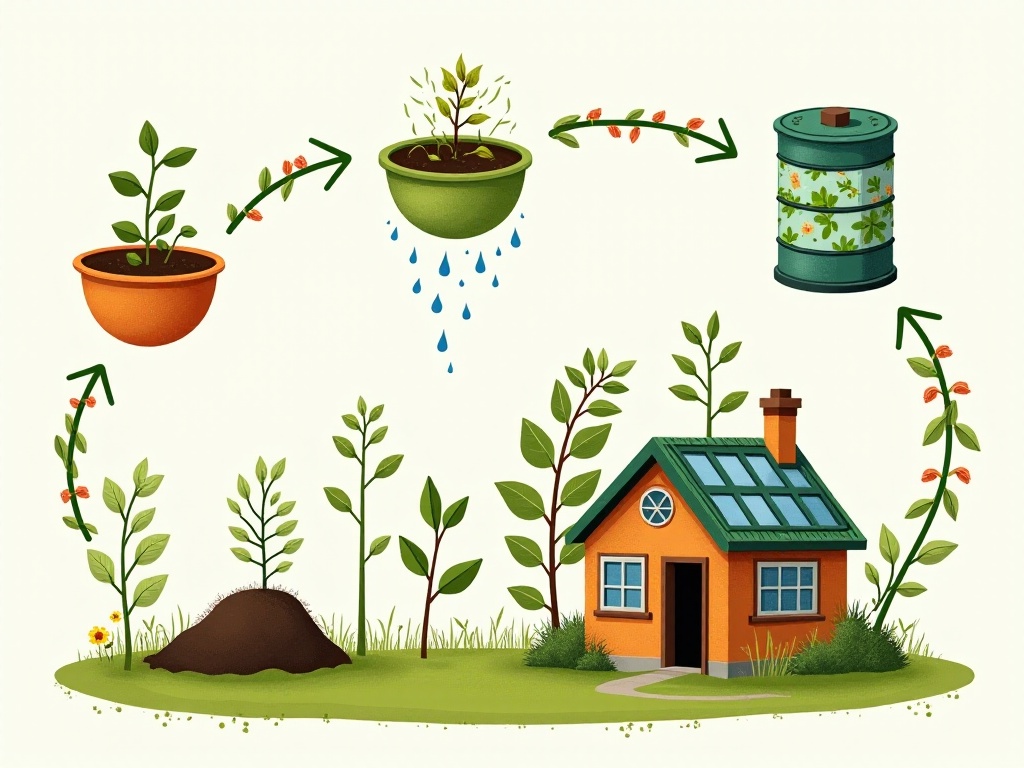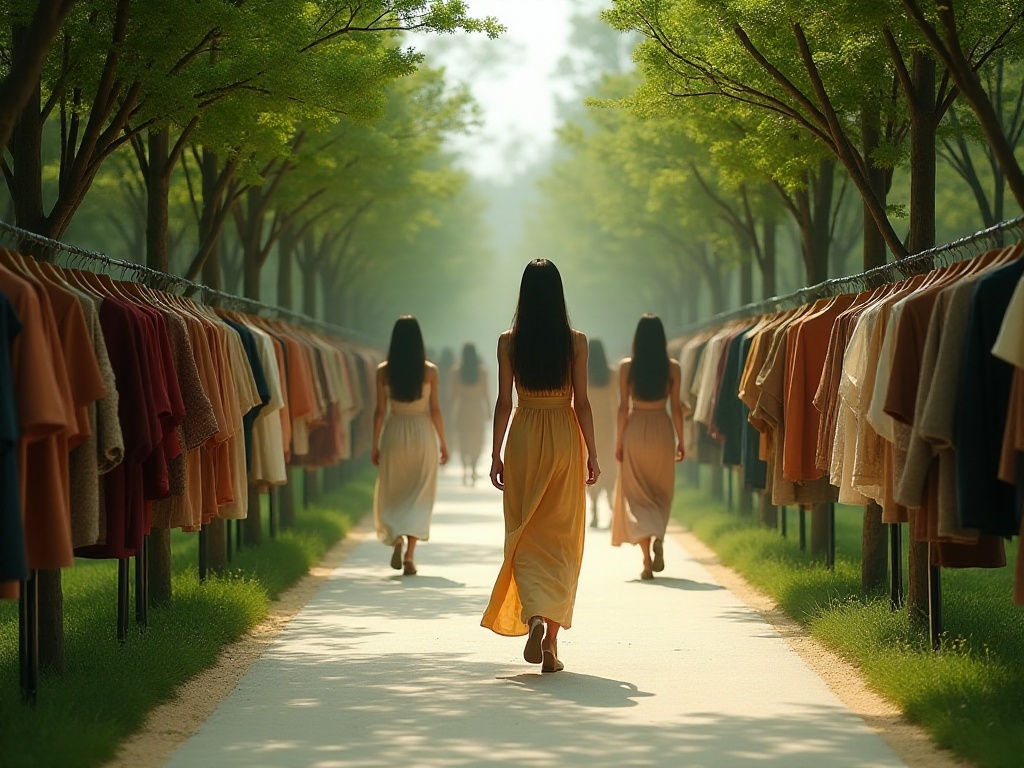Getting Straight to the Point
My closet was once packed with all kinds of clothes - from spring to winter wear, from athletic to professional attire, from casual wear to evening gowns. Every time I opened my closet, I was greeted by a chaotic mess of clothing. My wallet was mysteriously emptied, and credit card bills were becoming a headache. Today, let me share my personal experience of how I transformed from a shopping-obsessed hoarder into a minimalist who pursues a simplified lifestyle.
The Turning Point
Before last Chinese New Year, I started the traditional year-end cleaning. The moment I opened my closet, the sight before me left me completely overwhelmed. The closet was stuffed with clothes - some bought during last year's Singles' Day shopping festival, some purchased casually on friends' recommendations, and some from impulsive shopping three years ago. What's more frustrating was that many clothes still had their tags on, never worn.
At that moment, I suddenly realized there was a major problem with my consumption habits. I began to recall how these clothes came to be: some were bought because I saw friends wearing similar items, some because I felt it would be a waste to miss a sale, and others due to impulse purchases of trendy styles. These clothes not only occupied massive space but also consumed my time and money.

Reflecting on Consumption
After careful consideration, I realized this situation wasn't unique. Many friends had similar experiences: buying things they liked only to find they never used them. Some friends had dozens of sneakers but only wore two or three pairs regularly; others had dozens of T-shirts but always wore the same few comfortable ones.
More shocking was that according to data from a well-known market research firm, about 65% of clothes in an average person's closet hadn't been worn in the past year. This means most of our clothing purchases are just wasting money and resources. These unused items not only take up valuable storage space, but more importantly, their production consumed vast natural resources and generated significant pollution.
I began to reflect on my shopping behavior. During each shopping trip, I was influenced by various marketing tactics: time-limited offers, discounts, bundle deals, and so on. These marketing strategies created an illusion that not buying meant missing out on opportunities, when in fact these "opportunities" often became burdens.
Action Plan
After recognizing the problem, I began researching how to change this situation. Through reading numerous related books and articles, attending various lectures and workshops, I gradually developed a complete zero-waste lifestyle plan.
The first step was to change the most basic shopping habits. According to statistics from an environmental organization, about 30% of our purchased goods eventually become waste, with a large portion resulting from impulse buying. To avoid this, I started creating strict shopping lists and carefully considering the necessity of each item before purchasing.
I also established a consumption tracking system to record every expense, including amount, purpose, and reason for purchase. Through this system, I could clearly see my consumption patterns and better control my spending.
Meanwhile, I began focusing on sustainable consumption concepts. I learned that producing and transporting an ordinary cotton T-shirt consumes about 2,700 liters of water, equivalent to one person's drinking water for 10 days. Such data strengthened my determination to change.
Practical Details

Shopping Section
In practice, I found that establishing correct shopping concepts was crucial. Before each purchase, I would ask myself three important questions:
The first question is "Do I really need this?" This question seems simple but actually requires deep thinking. For example, when I want to buy a new coat, I first check if my existing coats are sufficient and still usable. If current coats are still in good condition, then a new purchase would likely become another unused item.
The second question is "How much value will it bring me?" This question helps me evaluate the actual value of goods. For instance, an expensive branded clothing item that can only be worn once or twice has very low cost-effectiveness. Conversely, a basic piece with a simple style and durable quality, though perhaps not expensive, is more worth buying due to its high frequency of use.
The third question is "Are there more environmentally friendly alternatives?" This question made me start paying attention to products' environmental attributes. For example, I prioritize products made with eco-friendly materials or consider second-hand items. In my experience, many second-hand items are of good quality and more affordable.
This shopping method might feel troublesome at first but gradually becomes habit. According to my accounting records, this habit alone reduced my monthly discretionary spending by 60%. This not only saved a lot of money but more importantly avoided much unnecessary waste.
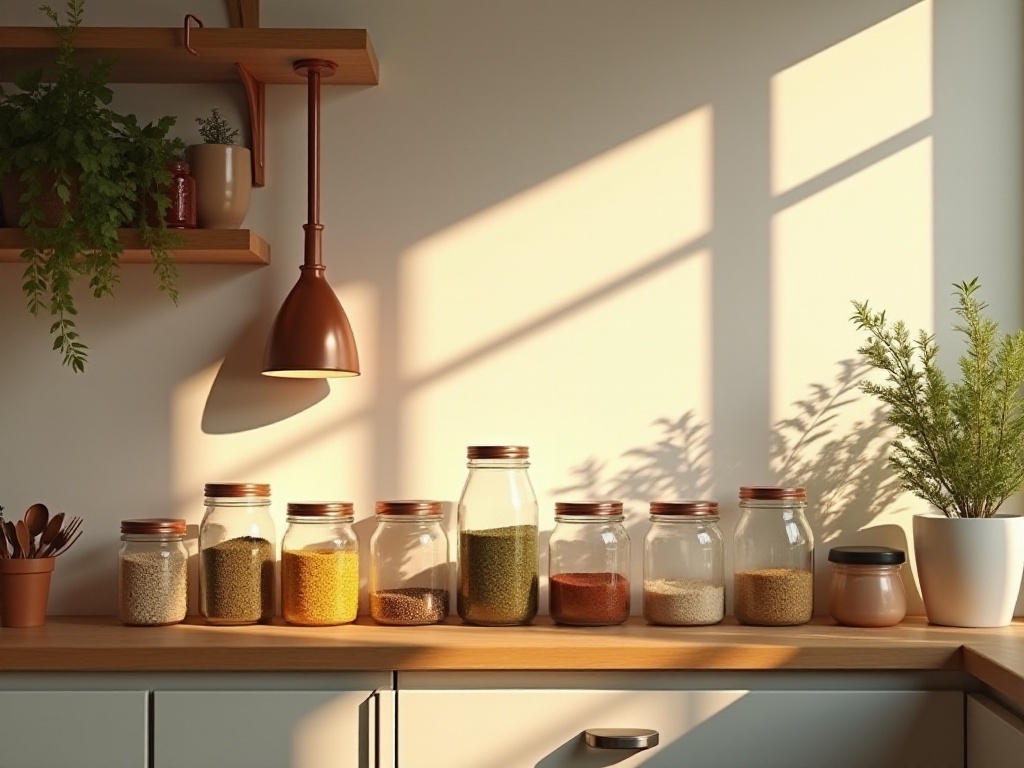
Storage Section
Storage is another important aspect. I categorized household items into three groups based on frequency of use: daily necessities, occasionally used items, and rarely used items.
Daily necessities include frequently worn clothes and commonly used appliances, which are placed in the most accessible locations. I discovered that 90% of our daily life only uses 20% of our possessions, demonstrating the famous Pareto principle in daily life.
Occasionally used items, such as seasonal clothing and items for special occasions, can be stored in secondary locations. Though these items aren't frequently used, they're worth keeping.
As for rarely used items, I regularly clear them out. Some can be given to those in need, some sold, and others recycled. Through this method, I not only saved storage space but also allowed items to realize greater value.
During the storage process, I discovered an interesting phenomenon: when items decreased, finding things became easier and organizing became more effortless. This made me realize that moderate material possession not only doesn't affect quality of life but actually makes life more comfortable.
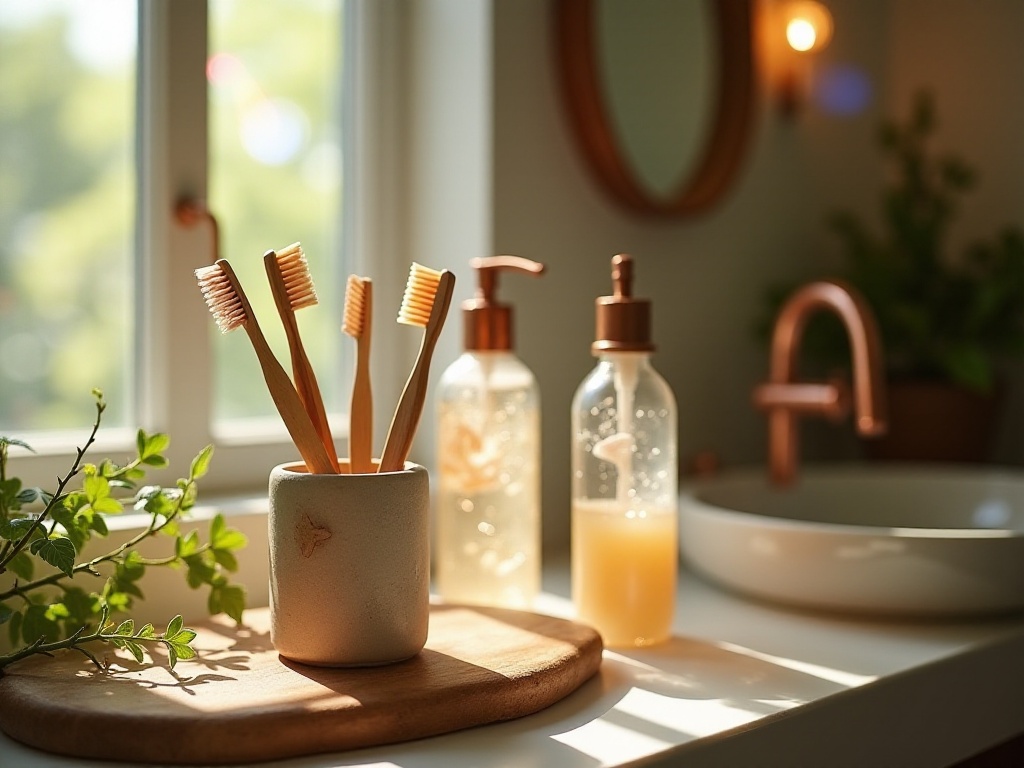
Circulation Section
For infrequently used items, I began trying sharing economy models. For instance, I joined the community library, so I don't need to buy many books that I'll only read once. Statistics show that one book in a library can be used by an average of 15 people, greatly improving resource utilization.
I also participated in community item exchange activities. During these events, I not only dealt with many unused items but also met many like-minded friends. We often exchange environmental protection tips and share sustainable living experiences.
Additionally, I tried rental services. For example, when attending important occasions, rather than buying an expensive formal dress, I would rent one. This not only saves money but also avoids clothing waste.
Through this process, I deeply realized: many items don't need to be owned, being able to use them is enough. This sharing model is not only environmentally friendly but also promotes community interaction, achieving multiple benefits.
Results Sharing
After six months of persistence, my life underwent dramatic changes. First were the material changes: home space became spacious and neat, no longer cluttered with various items; monthly expenses decreased by 40%, and this saved money could be used for more meaningful things.
More important was the change in mindset. Previously, I wanted to buy everything I liked, now I think more rationally about needs; before I always felt I didn't have enough things, now I feel I have too many; previously I was often troubled by not being able to find things, now life has become orderly.
I also discovered that when I no longer focused too much attention on shopping, I had more time and energy for other things. Such as reading and learning, exercising, spending time with family. These are the things that truly improve quality of life.

Advanced Thoughts
Zero-waste living isn't just about individuals; it actually reflects a larger social issue. We live in an era of overconsumption, where various marketing tactics constantly stimulate us to buy more goods. However, this consumption model is putting enormous pressure on the planet.
Research shows that if 10% of the global population adopted a zero-waste lifestyle, it could reduce about 5 million tons of waste annually. This number might seem distant, but every person's small step change contributes to this goal.
From a deeper perspective, overconsumption actually reflects a psychological state of modern people: we try to fill inner emptiness through shopping, to gain security through material possession. However, true happiness doesn't come from material accumulation, but from inner fulfillment and satisfaction.
Experience Summary
Through this period of practice, I deeply realized: zero-waste living isn't achieved overnight but requires a gradual process. At the beginning, I also felt frustrated when changes weren't perfect enough, but later I understood that what's important isn't how perfect you do it, but to keep taking action.
Everyone can start with small things, such as carrying shopping bags, using reusable water bottles, reducing disposable items usage. These seemingly small changes, when accumulated, will produce huge impacts.
My experience is: first, clarify your goals and know why you're doing this; second, progress gradually and don't put too much pressure on yourself; finally, persist in action and let these good habits gradually become part of life.
As the old saying goes: a journey of a thousand miles begins with a single step. Everyone can start now to contribute their strength to creating a more sustainable future.

Future Outlook
With rising environmental awareness, more and more people are starting to pay attention to zero-waste living. According to market research firms' predictions, by 2025, the global zero-waste related industry market size will reach 200 billion USD. This number indicates that sustainable lifestyle has become an irreversible trend.
We can also see that more and more enterprises are starting to value environmental concepts, launching various eco-friendly products and services. Such as biodegradable packaging, second-hand goods trading platforms, sharing economy services. These all provide us with more choices for practicing zero-waste living.
Looking to the future, I believe zero-waste living will become increasingly popular. This isn't just because of rising environmental awareness, but more because people gradually recognize that a lifestyle that is simple but not simplistic is the true quality life.
Do you have any thoughts and experiences to share? Welcome to tell me in the comments section.


